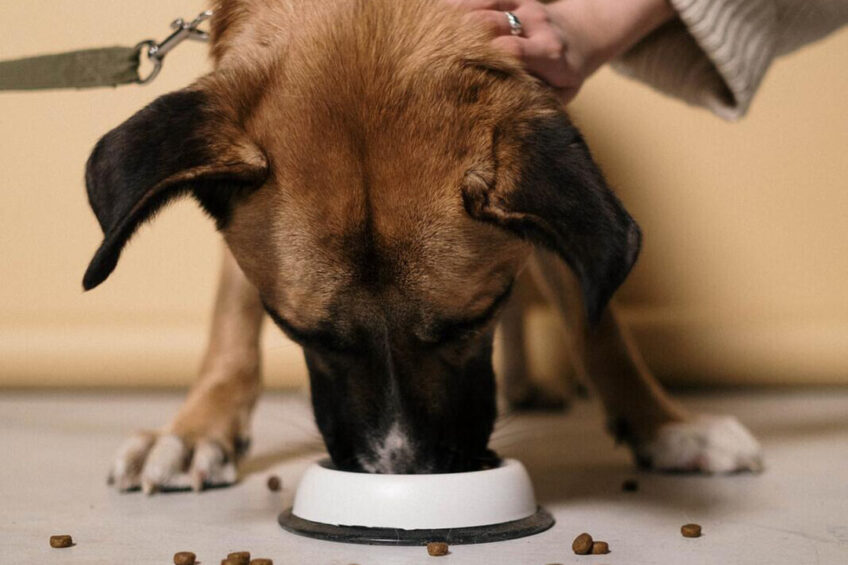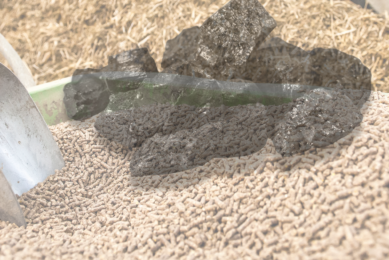Insect-based pet food: Market and consumer perception

Insect-based pet food producers are using several health and sustainability claims for marketing purposes, which are expected to be the main drivers of market growth in future. But how do consumers perceive it?
The growing interest in the use of insects as an alternative source of proteins for human consumption has also resulted in the appearance of insect-based dog and cat food products on the market. Edible insects are good sources of essential nutrients including amino acids, fatty acids, minerals, and vitamins. Companion animals are considered family members, and as a result, trends observed in human food are rapidly transferred to the pet food market. Recent studies show that insect-derived ingredients are sustainable, highly digestible and could promote the health of companion animals.
In a current study published in the Journal of Asia-Pacific Entomology, researchers investigated information about the insect-based pet food market, looking at the types of products that are commercially available, and the types of insect species commonly used in these products. They synthesised information about the health and sustainability claims currently being made by insect-based pet food companies and consumer perceptions of these products in general as well as the claims being made to market these products.
Insect-based pet food – the journey
The insect-based pet food market is growing rapidly in Europe and recent regulatory approval in the USA will also push this growth in the North American market. Background information on insects shows that the first insect-based dog food in Europe was launched in 2015. By September 2018, there were at least 12 insect-based pet food brands being marketed in Europe. In the following years, several pet food brands emerged that marketed only insect-based products. In the current study (2023) researchers investigated the global insect-based pet food market and found 43 brands actively selling insect-based pet food globally.
Dog food markets vs Cat food markets
Most insect-based pet food brands were active in the dry dog food market segment, which was followed by wet dog food. Only a few companies were active in insect-based cat food. Regarding the insect species, most pet food brands were marketing black soldier fly-based products. These figures clearly indicate the positive movement of insect-based dog food made from black soldier fly ingredients, especially in European markets.
North America: Legislative barriers
The growth of insect-based pet foods in North America was restricted, mainly due to legislative barriers; however, recent regulatory approval concerning the use of insect-based ingredients in the USA is expected to lead to rapid growth in the North American market. As some Asian countries such as South Korea are quick followers of food trends in the USA, the growth trend of insect-based pet food in the USA could potentially be followed by some Asian countries.
Current claims about insect-based pet food
As insect-based pet food is a relatively new concept on the market, the success of launching such a unique product globally depends on the proper marketing of functional claims. The researchers used an investigative approach to make an inventory of claims that are currently being used for the marketing of insect-based pet foods; they checked the labels of products from all the insect-based pet food brands that were considered (with active sales) and made an inventory of all the claims that were specifically associated with insect ingredients in recipes.
Claims were grouped into 5 categories:
- sustainable
- hypoallergenic
- gut health & easy digestibility
- immune health or antioxidant activity
- brain health for senior dogs
Most used claim in Europe
The result was that, in Europe, ‘hypoallergenic’ is the most used claim for insect-based pet food. The compatibility of insect proteins with allergic dogs and cats is still unknown. However, there are no reported cases of allergies in sensitive dogs and cats after consumption of insect-based pet food. It is suspected that the hypoallergenicity of insect proteins arises because these proteins are novel and unfamiliar to the immune response of dogs and cats. Following hypoallergenicity, sustainability is the second most used claim in Europe and the most popular claim in North America.
Sustainability claim
Insects farmed for the purpose of insect-based ingredient production are fed with food industry by-products which will otherwise end up in incineration or biogas production. Therefore, insect ingredients have a very low environmental footprint and they are fully circular.
Gut health and easy digestibility
Gut health and easy digestibility is the third most used claim in Europe. There are some studies indicating that insect proteins can improve the gut health of monogastric animals; one such study showed that black soldier fly larvae proteins can suppress the counts of pathogenic Clostridium perfringens bacteria in the gut of dogs and cats.
In another study, it was reported that insect proteins can attenuate Clostridium difficile-induced intestinal barrier disruption.
In another recent study, cricket-derived ingredients positively modulated gut microbiota. Some pet food producers are also using immune health and antioxidant activity claims for market insect-based pet foods.
The least common claim is brain health improvement in ageing dogs.
Consumer perception of claims related to insect-based pet foods
As insect-based pet food producers use various health and sustainability claims for marketing, the perception of health and sustainability claims by pet owners will be one of the key drivers fuelling the growth of the insect-based pet food industry. In a recent study, participants indicated more than 50% willingness to feed their dogs insect-based pet foods, while in another study involving 50 pet owners, more than 90% gave a positive opinion about insect-based pet food.
The willingness to feed insect-based pet food to dogs also differs with insect species. A recent study reported that participants expressed higher willingness to feed their pets cricket and black soldier fly-based pet foods compared to mealworms as well as ants. Some pet owners suggested that insect neophobia would be reduced if these pet foods were prescribed by a veterinary practitioner.
Conclusion
The recent regulatory approval in the USA will push the growth of the insect-based pet food market as it is expected to influence some of the Asian markets. Insect-based pet food producers use several health and sustainability claims for marketing; some claims are based on scientific evidence, while for others more evidence is needed. It appears that pet owners have responded positively to the sustainability, hypoallergic and gut health claims. It is proposed that the acceptance of such claims will be the main driver of insect-based pet food in the years ahead. The researchers believe that insect ingredients and insect-based pet food producers should adopt systematic marketing, produce more scientific evidence, and actively communicate and partner with veterinarians to improve consumer perceptions of claims used to promote insect-based pet foods.
This article is based on an original article by S. A. Siddiqui, T. A. Brunner, Iwan Tamm, P. van der Raad, G. Patekar, N. A. Bahmid, K. Aarts, and A. Paul. ‘Insect-based dog and cat food: A short investigative review on market, claims and consumer perception.’ Journal of Asia-Pacific Entomology, 26:102020.











